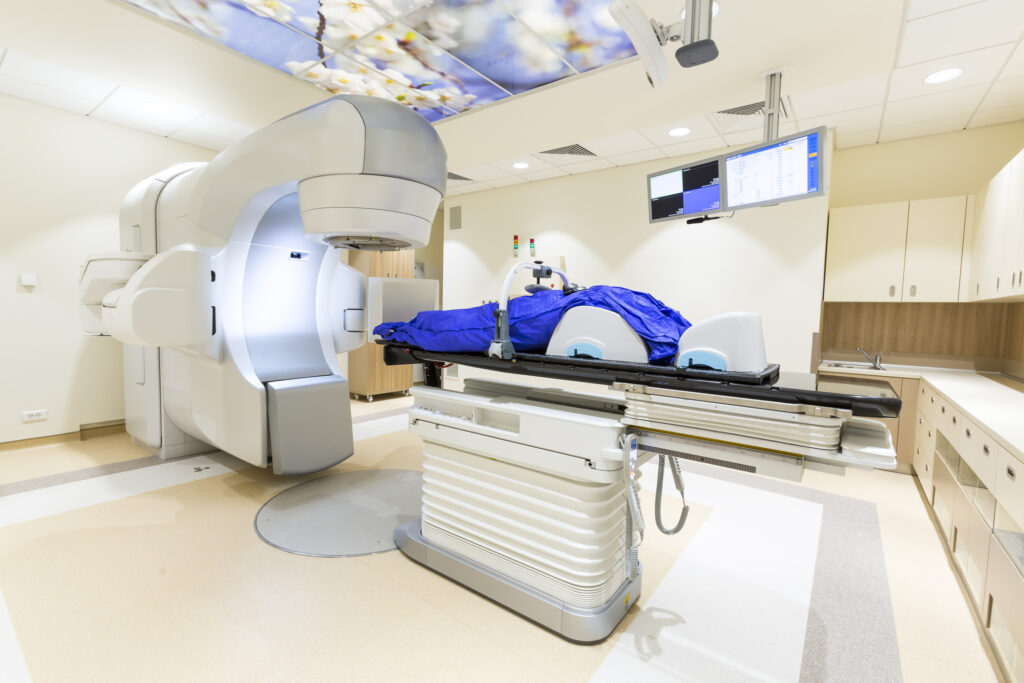Summary: Proton therapy is an advanced form of radiation therapy that uses high-energy proton beams to target cancer cells with precision. It can be employed as a standalone treatment or in combination with surgery, chemotherapy, or traditional X-ray radiation. Proton therapy is especially beneficial for treating recurrent cancers, offering a targeted approach that minimises damage to healthy tissue. This article explores the applications, advantages, and challenges of proton therapy, highlighting its role in both initial and recurrent cancer treatment plans.
Introduction to Proton Therapy
Cancer treatment has evolved significantly over the years, with proton therapy emerging as a promising advancement in radiation oncology. Using proton beams instead of X-rays, this therapy delivers targeted radiation, reducing damage to surrounding healthy tissues and organs. It is versatile enough to be used alone or alongside other modalities like surgery and chemotherapy, and it shows great promise for recurrent cancers.
Understanding Proton Therapy
Proton therapy involves the use of protons—positively charged particles—to destroy cancer cells. Unlike traditional X-ray radiation, protons can be precisely controlled to deposit their maximum energy at a specific depth, known as the Bragg peak. This allows for targeted treatment with minimal collateral damage to healthy tissues.
How Proton Therapy Works
- Acceleration of Protons: Protons are accelerated using a cyclotron or synchrotron to reach high energy levels.
- Beam Delivery: The protons are guided to the tumour site through a series of magnets and collimators.
- Targeting: The energy is released at the tumour, maximising damage to cancer cells while sparing surrounding tissues.
Proton Therapy as a Standalone Treatment
Proton therapy can serve as the sole treatment modality for several types of cancer, particularly those located near critical structures or in paediatric patients.
Paediatric Applications
In children, preserving healthy tissue is crucial to avoid long-term developmental issues. Proton therapy is particularly effective in treating:
- Brain tumours
- Spinal tumours
- Soft tissue sarcomas
Adult Applications
For adults, proton therapy is used to treat cancers that require high precision, such as:
- Brain tumours
- Prostate cancer
- Lung cancer
- Eye tumours (e.g., uveal melanoma)
Advantages of Proton Therapy Alone
- Reduced Side Effects: Minimises damage to healthy tissues.
- Precise Targeting: Suitable for tumours located near vital organs.
- Enhanced Quality of Life: Fewer treatment-related complications.
Combining Proton Therapy with Other Treatments
In many cases, proton therapy is most effective when used alongside other treatment modalities such as surgery, chemotherapy, or traditional X-ray radiation.
Proton Therapy and Surgery
Combining proton therapy with surgery can help achieve complete tumour eradication:
- Pre-Surgical Use: Shrinks tumours to facilitate surgical removal.
- Post-Surgical Use: Targets residual cancer cells to prevent recurrence.
Proton Therapy and Chemotherapy
Proton therapy can be integrated with chemotherapy for a more comprehensive approach:
- Concurrent Use: Chemotherapy enhances the tumour’s sensitivity to radiation.
- Sequential Use: Proton therapy targets areas unaffected by systemic chemotherapy.
Proton Therapy and Traditional X-Ray Radiation
In some cases, a hybrid approach involving both proton and X-ray radiation is used:
- Boost Therapy: Proton therapy is used as a supplementary dose for hard-to-treat tumours.
- Re-Treatment: Patients previously treated with X-rays can benefit from proton therapy’s precision for recurring cancers.
Proton Therapy for Recurrent Cancer
One of the standout applications of proton therapy is in treating recurrent cancers, where conventional radiation is no longer an option due to the risks of cumulative radiation damage.
Why Proton Therapy is Ideal for Recurrent Cancer
- Reduced Cumulative Dose: Proton therapy minimises radiation exposure to previously treated areas.
- Precision: Allows for re-treatment of tumours near sensitive structures.
- Improved Outcomes: Offers a new chance for remission or control in patients with limited options.
Examples of Recurrent Cancers Treated
- Head and neck cancers
- Breast cancer
- Central nervous system tumours
- Pelvic cancers (e.g., rectal cancer)
Advantages of Proton Therapy
Proton therapy offers numerous benefits over traditional radiation therapy, making it a preferred choice in certain cases.
- Precision and Reduced Toxicity
Proton beams can be precisely shaped and controlled, sparing nearby healthy tissues and reducing side effects.
- Versatility
Proton therapy can be tailored to treat a wide range of cancers, from paediatric cases to complex adult tumours.
- Fewer Long-Term Side Effects
Lower radiation exposure translates to a reduced risk of secondary cancers and other late-onset complications.
- Improved Quality of Life
Patients experience fewer side effects during and after treatment, allowing them to maintain a better quality of life.
Challenges and Limitations
While proton therapy has clear advantages, it is not without challenges.
- High Costs
Proton therapy is expensive due to the cost of equipment and infrastructure, limiting its availability.
- Limited Access
Proton therapy centres are relatively scarce, requiring patients to travel long distances for treatment.
- Not Suitable for All Cancers
Certain cancers may not benefit significantly from proton therapy compared to traditional treatments.
- Insurance Coverage
The high cost of proton therapy often leads to issues with insurance approval, posing financial barriers for patients.
Future Directions
The field of proton therapy is rapidly advancing, with ongoing research focusing on:
- Technological Innovations: Improving equipment to make proton therapy more accessible and cost-effective.
- Enhanced Imaging Techniques: Integrating real-time imaging for even greater precision.
- Combination Therapies: Exploring new protocols for combining proton therapy with immunotherapy and other emerging treatments.
Conclusion
Proton therapy represents a cutting-edge approach in cancer treatment, offering precision and versatility. Whether used as a standalone treatment or in combination with surgery, chemotherapy, or traditional radiation, it provides an effective solution for complex and recurrent cancers. While challenges like cost and accessibility remain, ongoing advancements promise to expand its availability and applications, making it a cornerstone of modern oncology. As research continues, proton therapy is likely to play an even more significant role in improving cancer outcomes and patients’ quality of life.
Disclaimer
The information provided in this article is for general educational and informational purposes only and is not intended as medical advice, diagnosis, or treatment. Open Medscience does not offer medical services, and the content herein should not be used as a substitute for professional medical advice from a qualified healthcare provider. Readers are strongly advised to consult their doctor or a licensed medical practitioner regarding any questions they may have about a medical condition or treatment, including proton therapy. Mention of specific treatments, protocols, or technologies does not imply endorsement or suitability for any individual case. While every effort has been made to ensure the accuracy of the information at the time of publication, Open Medscience makes no guarantees and assumes no responsibility for any errors or omissions. The views expressed are those of the authors and do not necessarily reflect those of Open Medscience or its affiliates.
You are here: home » diagnostic medical imaging blog »



